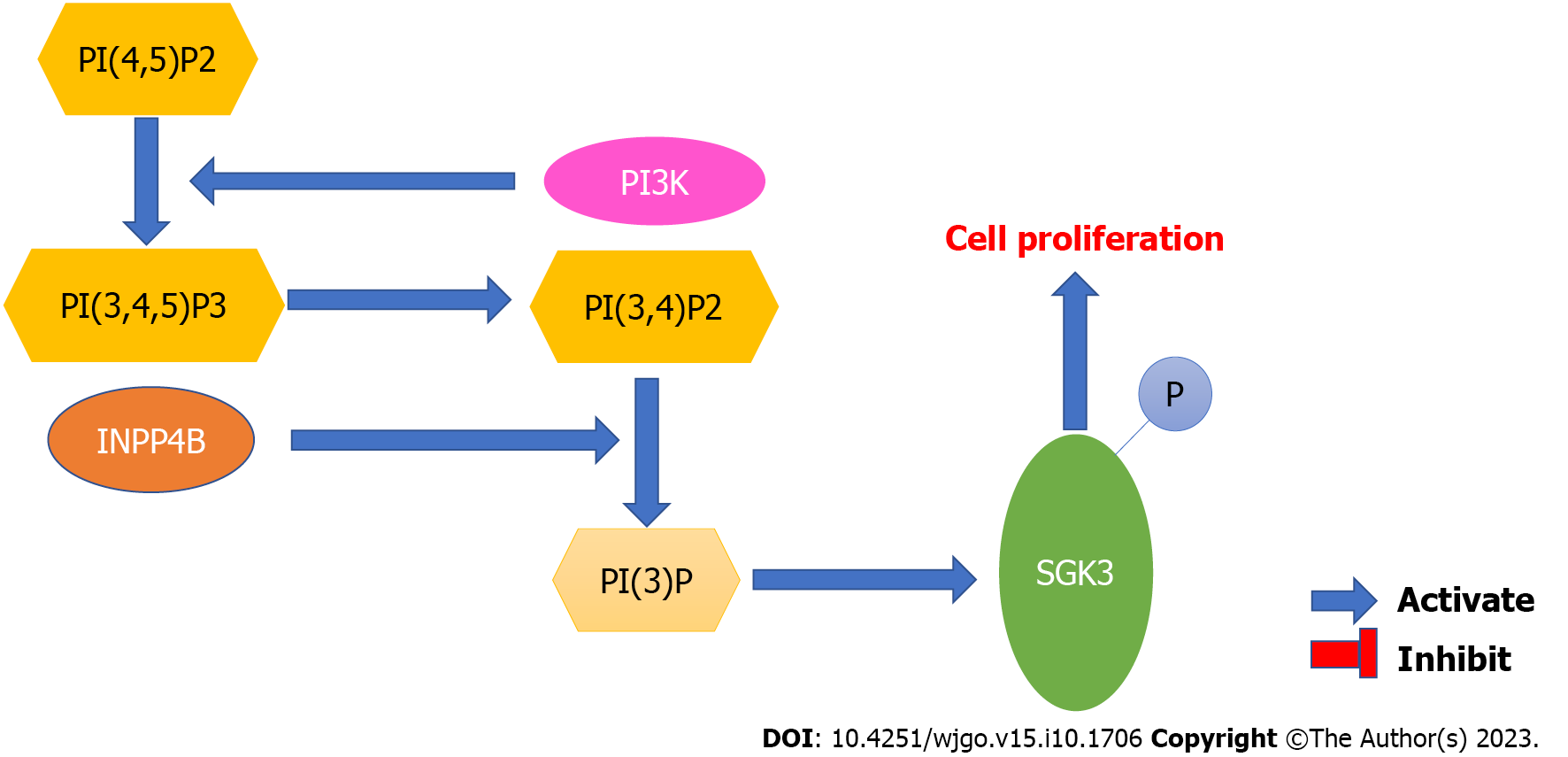Copyright
©The Author(s) 2023.
World J Gastrointest Oncol. Oct 15, 2023; 15(10): 1706-1716
Published online Oct 15, 2023. doi: 10.4251/wjgo.v15.i10.1706
Published online Oct 15, 2023. doi: 10.4251/wjgo.v15.i10.1706
Figure 1 Molecular mechanism of inositol polyphosphate-4-phosphatase type II in cancer proliferation through the phosphoinositide 3-kinase/protein kinase B pathway.
A: Phosphoinositide 3-kinase can activate cell membrane receptors, which increases the content of PI(3,4,5)P3 and PI(3,4)P2. PI(3,4,5)P3 and PI(3,4)P2 further bind and activate the downstream factor protein kinase B (AKT). Activation of AKT promotes cell proliferation and ultimately tumor development. Inositol polyphosphate-4-phosphatase type II promotes the conversion of PI(3,4)P2 to PI(3)P, thereby reducing the content of PI(3,4,5)P3 and PI(3,4)P2, which inhibits the AKT pathway; B: Phosphate and tensin homolog deleted on chromosome 10 can reduce the content of PI(3,4,5)P3 and PI(3,4)P2 by dephosphorylating PI(3,4,5)P3 into PI(4,5)P2, thereby inhibiting the AKT pathway. INPP4B was found to inhibit PTEN, which resulted in increased intracellular PI(3,4,5)P3 and PI(3,4)P2. PI(3,4,5)P3 and PI(3,4)P2 activate the AKT pathway, leading to the proliferation of tumor cells. INPP4B: Inositol polyphosphate-4-phosphatase type II; PI3K: Phosphoinositide 3-kinase; AKT: Protein kinase B; PTEN: Phosphate and tensin homolog deleted on chromosome 10.
Figure 2 Molecular mechanism of inositol polyphosphate-4-phosphatase type II in cancer proliferation through the phosphoinositide 3-kinase/serum and glucocorticoid-regulated kinase 3 pathway.
PI(3)P, produced by inositol polyphosphate-4-phosphatase type II, can bind to and activate serum and glucocorticoid-regulated kinase 3, which promotes the occurrence and development of tumors and resists the process of apoptosis of tumor cells. INPP4B: Inositol polyphosphate-4-phosphatase type II; PI3K: Phosphoinositide 3-kinase; SGK3: Serum and glucocorticoid-regulated kinase 3.
- Citation: Han L, Chen S, Du SY. Role of inositol polyphosphate-4-phosphatase type II in oncogenesis of digestive system tumors. World J Gastrointest Oncol 2023; 15(10): 1706-1716
- URL: https://www.wjgnet.com/1948-5204/full/v15/i10/1706.htm
- DOI: https://dx.doi.org/10.4251/wjgo.v15.i10.1706










